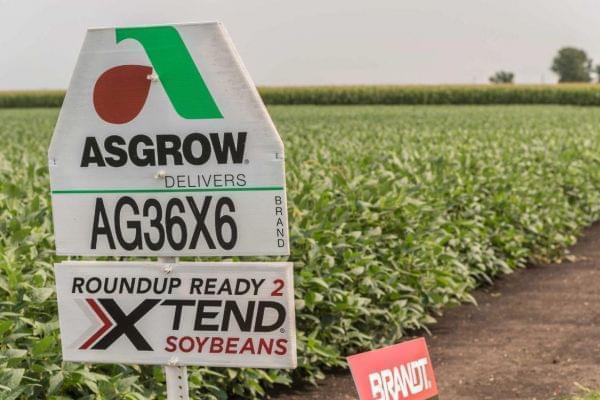Soybean Farmers Win Big In $12 Billion Federal Aid Package

Darrell Hoemann/Midwest Center for Investigative Reporting file photo
The details of the federal government’s $12 billion aid package for farmers affected by trade disputes are out — and soybean farmers are the major beneficiaries.
Farmers can start claiming payouts starting Sept. 4, and amounts to $4.7 billion total for corn, cotton, dairy, hog, soybean and wheat producers, according to U.S. Department of Agriculture leaders. That’s less than the expected $7 billion to $8 billion Agriculture Secretary Sonny Perdue previously mentioned.
About $3.7 billion will go to soybeans alone. That may seem like something soybean farmers would cheer for, but Illinois farmer Doug Schroeder wasn’t so keen on it.
“First of all, I appreciate the acknowledgement that U.S. soybean farmers have been damaged by the tariff situation,” said Schroeder, who lives between Bloomington and Champaign. “However, clearly, soybean farmers don’t want aid they want free trade and the ability to market our products in a free environment.”
This might not be the end of the money: U.S. Department of Agriculture leaders said a second round of direct payouts is possible, considering that while they’ve said they’ll spend up to $12 billion, only about $6 billion has been earmarked.
USDA Secretary Sonny Perdue said Monday the program was meant to help farmers who are in a difficult place while the White House works out a plan.
“The programs we are announcing today buys time for the president to strike long-lasting trade deals to benefit our entire economy,” Perdue said on a conference call and in a YouTube video.
Commodities that won’t see direct payouts but are affected by the tariffs from China, Mexico and Canada, like Washington cherries, will have to use one of the the other two arms of the aid package.
One of those is a $1.2 billion purchase and placement program that’ll funnel items to things like food pantries. The USDA said the list of items and amount spent on them may change as harvests come in and supply and demand changes.
The other program, a relatively small $200 million chunk, will go to promoting trade in new markets. Anyone who raises or grows a commodity crop can apply for funding to go to trade shows and support efforts to establish new markets.
The details were met by skepticism from the National Corn Growers Association, which said in a statement that the plan is “insufficient to even begin to address the serious damage done” to its market. It also said that the key would be for the Trump administration to “rescind tariffs, secure trade agreements and allow for year-round sales of higher blends of ethanol.”
An ag economist at Colorado State University also critiqued the deal, saying the trade war could impact farmers for a long time.
“The longer this lasts, the longer other produces and purchasers have the ability to adjust their production decisions and their purchasing decisions,” Amanda Countryman said.
She added: “It’s important to keep in mind that this is a redistribution of taxpayer dollars to compensate farmers for damages caused by the trade conflict with China.”
Follow Madelyn on Twitter: @madelynbeck8

